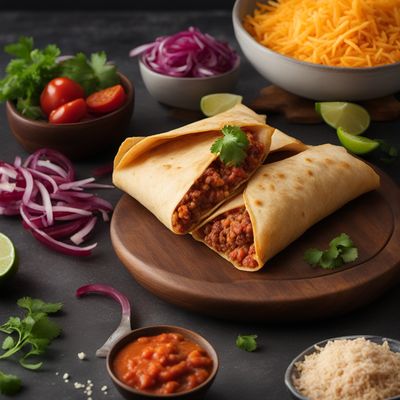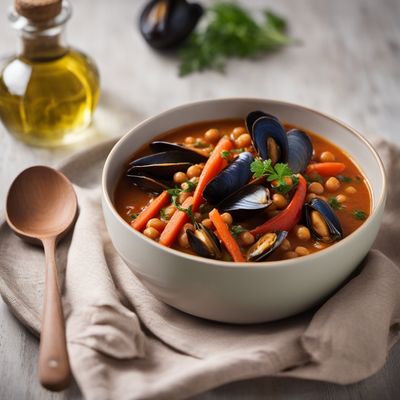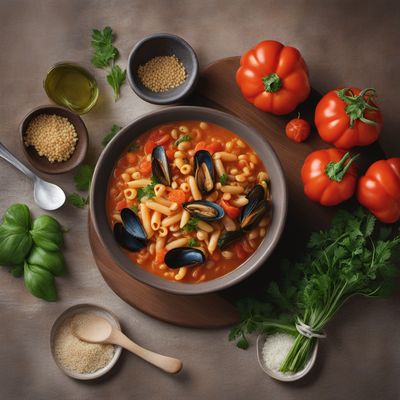
Ingredient
Preserved tomato, whole or pieces
Sun-Kissed Tomato Delights
Preserved tomato, whether whole or in pieces, is made by canning or bottling ripe tomatoes at their peak freshness. These preserved tomatoes retain their vibrant color, firm texture, and intense flavor, making them a versatile ingredient in various cuisines. They are commonly used in sauces, stews, soups, salads, and even sandwiches.
Origins and history
The preservation of tomatoes dates back centuries, with various methods used across different cultures. Canning and bottling techniques became popular in the 19th century, allowing tomatoes to be enjoyed year-round. Preserved tomatoes have since become a staple in many cuisines, adding depth and richness to countless dishes.
Nutritional information
Preserved tomatoes are low in calories and fat while being a good source of vitamins A and C. They also contain lycopene, a powerful antioxidant known for its potential health benefits. However, it's important to note that the nutritional content may vary depending on the specific brand and preparation method.
Allergens
Preserved tomatoes may contain allergens such as sulfites, which are commonly used as a preservative. Individuals with sulfite allergies should check the ingredient list and opt for sulfite-free options if necessary.
How to select
When selecting preserved tomatoes, look for jars or cans that are free from dents, bulges, or leaks. The lids should be securely sealed. Opt for brands that use high-quality tomatoes and minimal additives or preservatives. If possible, choose organic or locally produced options for a more sustainable and flavorful choice.
Storage recommendations
To maintain the freshness and quality of preserved tomatoes, store them in a cool, dark place such as a pantry or cellar. Once opened, transfer any unused portions to a clean, airtight container and refrigerate. Use within a few days to ensure optimal flavor and texture.
How to produce
Growing and preserving tomatoes at home is a rewarding experience. To produce preserved tomatoes, start by growing your own tomatoes or sourcing them from a local farm. Follow proper canning or bottling techniques to preserve the tomatoes at their peak freshness. There are numerous resources available online or in books that provide detailed instructions on home canning and preserving techniques.
Preparation tips
Preserved tomatoes can be used in a multitude of dishes. Add them to pasta sauces, soups, stews, or chili for a burst of rich tomato flavor. They are also delicious in salads, sandwiches, and even as a topping for pizzas. Experiment with different recipes and cuisines to explore the versatility of preserved tomatoes.
Culinary uses
Preserved tomatoes are a staple in Italian, Mediterranean, and Mexican cuisines, among others. They are commonly used in dishes such as pasta sauces, bruschetta, caprese salad, salsa, and enchiladas. Their intense flavor and vibrant color elevate the taste and visual appeal of these dishes.
Availability
Preserved tomatoes are widely available in grocery stores, supermarkets, and specialty food stores. They can be found in the canned goods aisle or the section dedicated to preserved vegetables and fruits.
More ingredients from this category
Recipes using Preserved tomato, whole or pieces » Browse all

Sierra Leonean-style Pringá Stew
Savory Sierra Leonean Pringá: A Hearty Stew Bursting with Flavors

Savory Serbian Cabbage Stew
Hearty Balkan Delight: Savory Serbian Cabbage Stew

Authentic Mexican Chimichanga Recipe
Crispy and Flavorful Mexican Chimichangas: A Deep-Fried Delight

Huevos Rancheros
Soulful Huevos Rancheros

Chickpea and Mussel Stew
Mediterranean Delight: A Hearty Chickpea and Mussel Stew

Chifa-style Pasta e Fagioli
Peruvian Fusion Pasta e Fagioli: A Chifa Twist on an Italian Classic

Southwestern Style Beef and Bean Lasagna
Spicy Tex-Mex Lasagna: A Fusion of Flavors

Crispy Chickpeas and Pasta with Tomato Sauce
Mediterranean Delight: Crispy Chickpeas and Pasta in Tangy Tomato Sauce

Toronto-style Istarska Supa
Toronto's Twist on Istarska Supa: A Fusion of Croatian and Canadian Flavors

Mediterranean Curry
Mediterranean Chickpea Curry with Feta Cheese

Pasta e Fagioli with Mussels
Seafood Delight: Pasta e Fagioli with a Twist

Tuscan Ribollita Soup
Hearty Tuscan Ribollita: A Rustic Delight
